Computational Couture¶
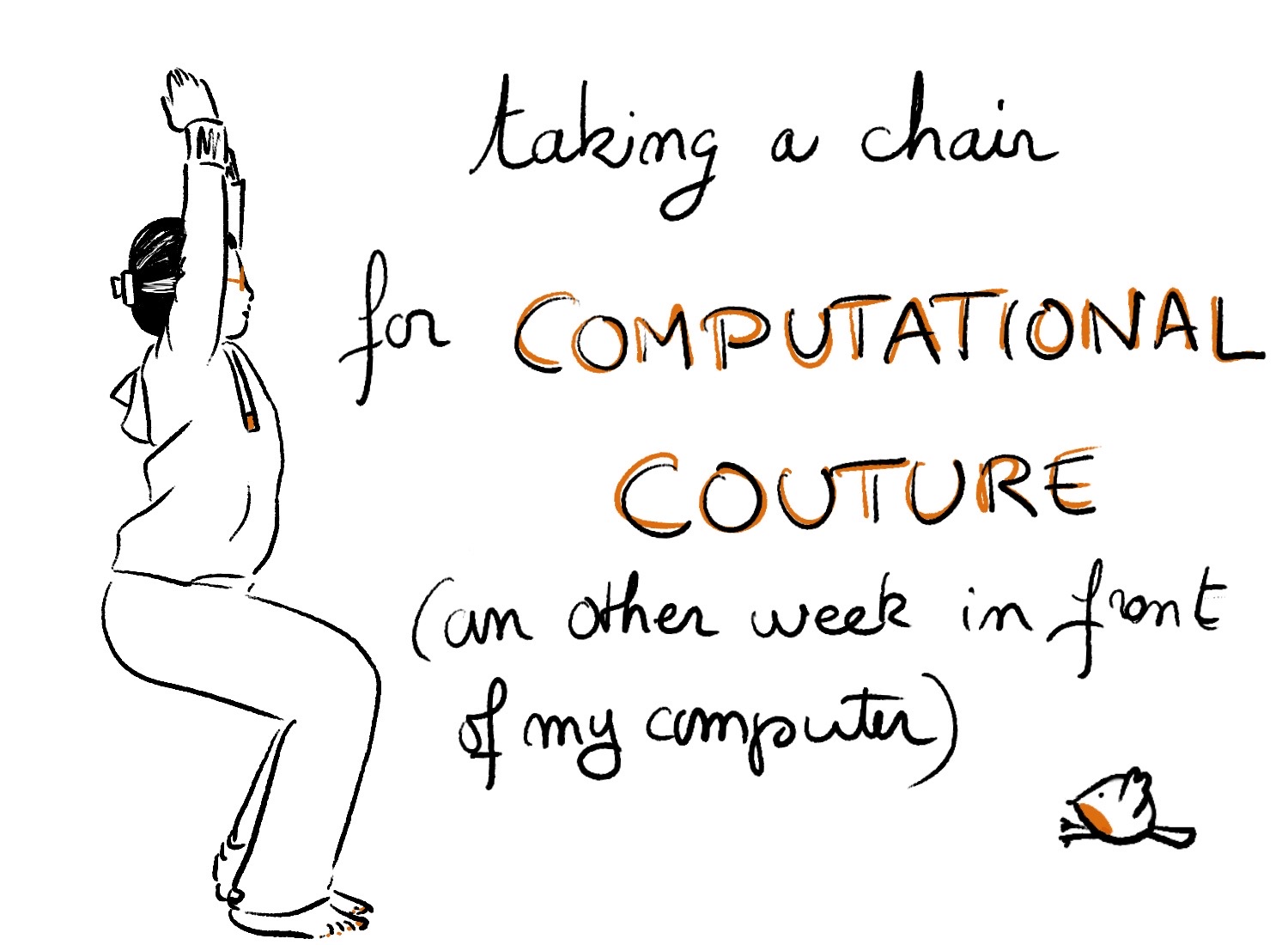 This week explores computational design methods towards a new reinterpretation of cloths, garments and accessories for fashion design, inspired by a new digital design methodology.
The assignements are:
This week explores computational design methods towards a new reinterpretation of cloths, garments and accessories for fashion design, inspired by a new digital design methodology.
The assignements are:
- Document the concept, sketches, references also to artistic and scientific publications Design a parametric model using Grasshopper3D and uploadthe rhino file + grasshopper files
- Learn how to use 3D printing techniques to print the 3D model in/on the chosen materials
- Document the workflow for exporting your file and preparing the machine and gcode to be 3D printed
- Upload your stl file with pictures at oscircularfashion.com
- Submit some of your swatches to the analog material library of your lab. (20cm *20cm aprox)
Art from mathematics and codes¶
Computacional design is just a crazy way to change designers's work. After a full day looking what was doing for fashion (example at W230, Australia) and architecture (example at Taubman College, USA), I got convinced than to make such beautiful curves and to have crazy renderings you need: a good mastery of Grasshoopper that I don't have yet and a Stratasys printer that I will never have.
I decided to go back to mathematics and work with variable. I love Vasarely and Morellet works, they are very motivaiting models for geometry and probability maths/arts class. However my favorite mathematical artist is Molnár.
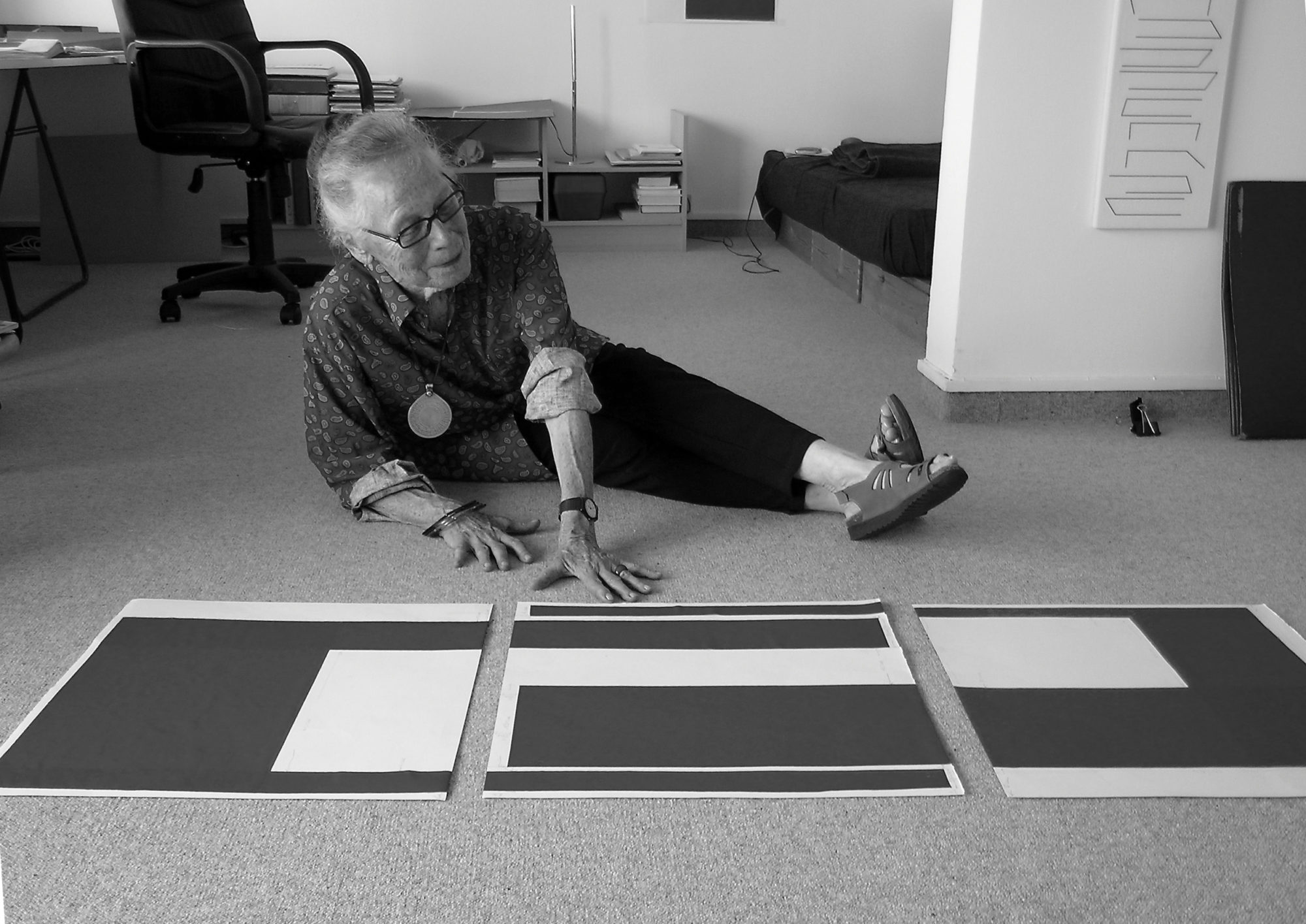 She was presented in 2017 as The Artist Who Drew With Computers, Before Computers Were a Thing at the Moma. You can check her website and here is a video with some of her works.
She was presented in 2017 as The Artist Who Drew With Computers, Before Computers Were a Thing at the Moma. You can check her website and here is a video with some of her works.
So even if my life is not squares, triangles, lines (terrific interview!) as her, I choose to to center this week on mathematical patterns.
From maze algorythm to cutted fabric¶
What I like about maze algorithms is their uncontrolled part, I follow the progression of the construction as fascinated. For that experimentation I started with a maze algorithms to get to laser cut models on tinkercad.
Randoms layers perforations¶
By changing from the maze algorithm: the base, the size and the forms of the modules and their funcions but keeping the differences between 1st module (round) and the 2sd modules (cylinder) I obtain:
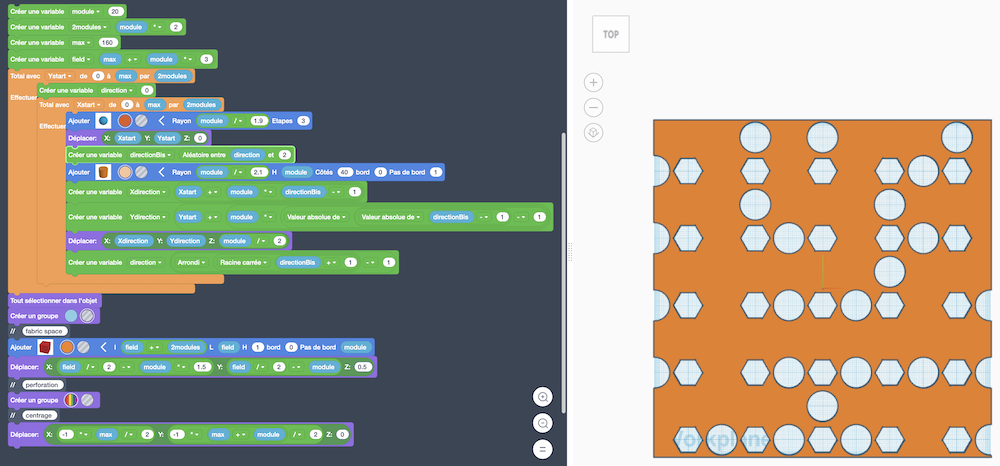 the code is in Tinkercad. The file can be export in STL or SVG considering the print of the object in the plan. I made a Inkscape file 1 with the goal to upload enought randoms layers to plug the 1st layer circular perforations. I like so much the idea to put a rule with no sense! Seven layers were needed (plus a square background). It could be nice to laser cut them in felt, the svg file is ready for it. This GIF shows the layering of the square of the back and then the 7 layers:
the code is in Tinkercad. The file can be export in STL or SVG considering the print of the object in the plan. I made a Inkscape file 1 with the goal to upload enought randoms layers to plug the 1st layer circular perforations. I like so much the idea to put a rule with no sense! Seven layers were needed (plus a square background). It could be nice to laser cut them in felt, the svg file is ready for it. This GIF shows the layering of the square of the back and then the 7 layers:

Hexagonal perforations pattern¶
To get a different pattern I made some changes of the previous code
- cancellation of the first series of modules to avoid repetition of placement;
- addition of a random variable to rotate the prism.
 The code is in Tinkercad. Because of the rounding of the square root of the variable directionBis which gives the variable direction, some modules are superimposed with distinct rotations which give different perforations from their hexagonal neighbors. If it was layered as felt it could give something like that:
The code is in Tinkercad. Because of the rounding of the square root of the variable directionBis which gives the variable direction, some modules are superimposed with distinct rotations which give different perforations from their hexagonal neighbors. If it was layered as felt it could give something like that:

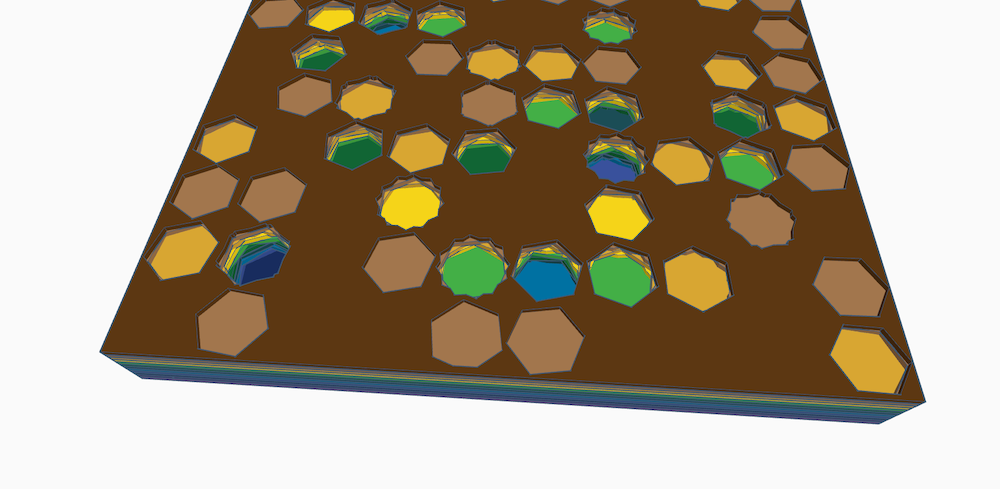 This time the rule was to cover the hole of the first layer (no back square) it take me 12 layers. If I'd started from the last it would have been 10. I let you solve this probability problem. If you want to make turn the 3D rainbow staking or get the STL files, you can go to Tinkercad.
This time the rule was to cover the hole of the first layer (no back square) it take me 12 layers. If I'd started from the last it would have been 10. I let you solve this probability problem. If you want to make turn the 3D rainbow staking or get the STL files, you can go to Tinkercad.
From Voronoï diagram to mittens¶
In mathematics, a Voronoi diagram is a division of the plane into cells from a set of centrals points. Each cell encloses its single central point, and forms the set of points in the plane that are closer to this central point than to any other. In dimension 2, we rely on the fact that the boundary between the Voronoi cells of two distinct seeds is located on the median that separates these two seeds. For a set of sprouts, the Voronoi diagram is constructed by determining the medians of each pair of sprouts. Voronoi diagram are use a lot for their aesthetic and the fact than the Fortune Algorythhm make it accessible. Some examples:
Mittens¶
My idea was something with 3D printed on tulle.
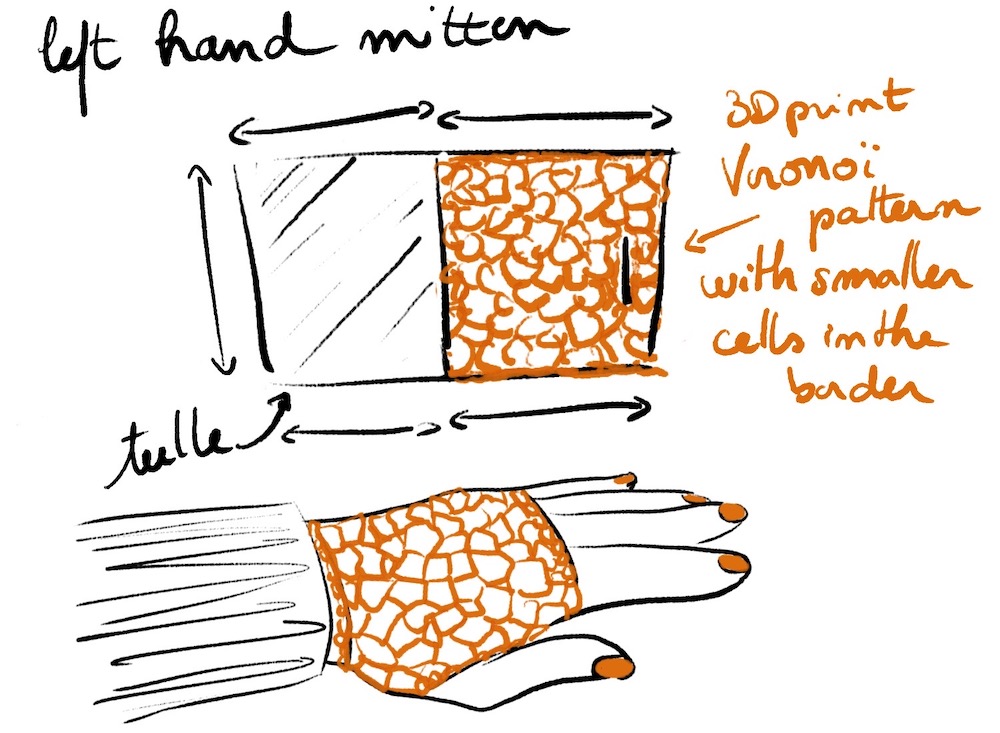
The basic pattern¶
I watch and follow Parametric House Voronoi tutorial and combined the drawing on Rhino 2 of the left mitten with this Grasshooper algorythm 3.

Left and right hand¶
The left and size hand are sligly differents by changing the seed.
I got a problem with the voronoi in my trapezoidal shape. Diane (Textile Lab instructor) make some change in the grasshooper code 4 to make it fit in.
Preparation of the printed¶
These are the ways to prepare Cura to get the GCode of 2 oj the textile Lab printers:
If you want to be sure than I can manage a printing, you can check my week 10
Printing¶
I'd run out off time to print them.
My Dall·e week¶
This week was the perfect one to try the AI Dall·e and get a nice portrait of myself
 The sentence was: "an oil painting of a woman taking her head in front of her computer to make Voronoi diagrams", I only changed the color of the hair to make them match mine better.
The sentence was: "an oil painting of a woman taking her head in front of her computer to make Voronoi diagrams", I only changed the color of the hair to make them match mine better.